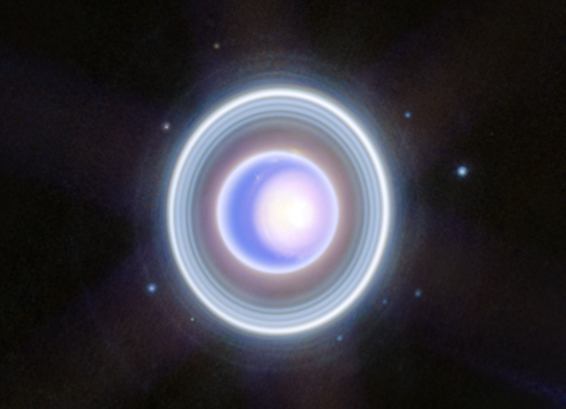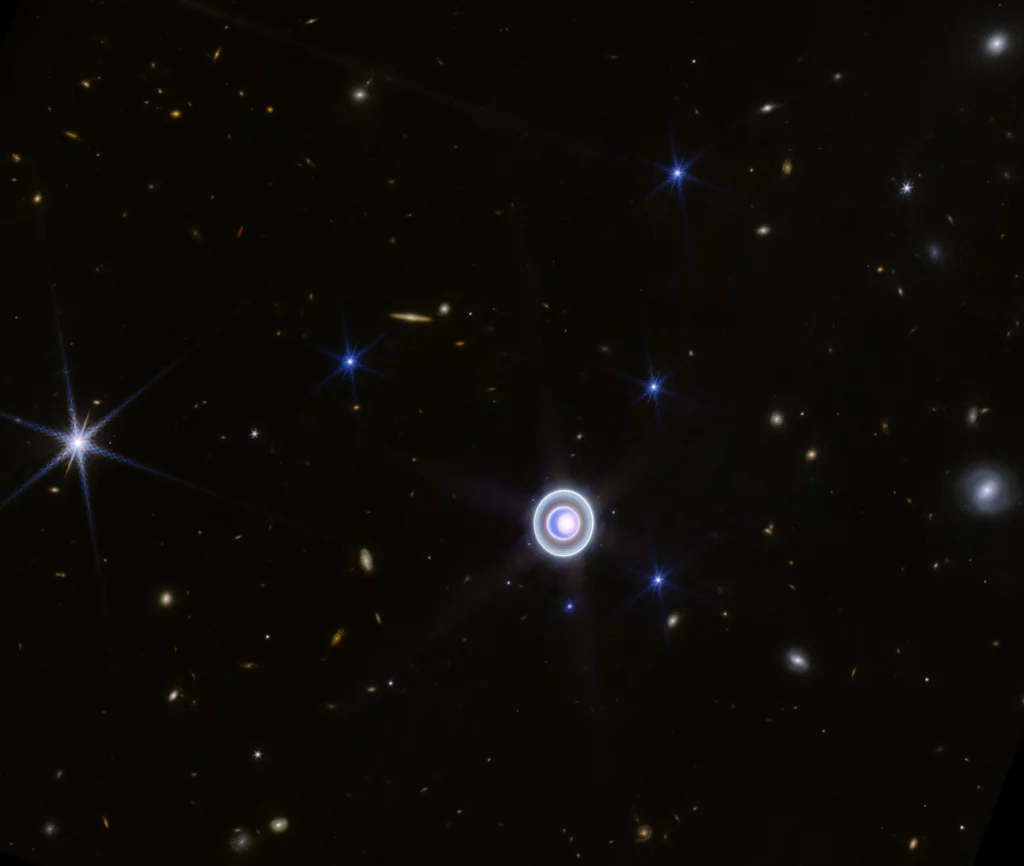
Uranus, the seventh planet from the sun, is often overlooked by astronomers and the public alike. But thanks to the James Webb Space Telescope, the leading infrared space observatory, we now have a clearer view of this ice giant world and its intriguing features.
Earlier this year, Webb began studying Uranus, revealing a planet with vertical rings, more than two dozen moons, and a bright spot at its north pole, known as a polar cap. This seasonal phenomenon appears when more sunlight hits this region as the planet nears its solstice, and then fades away in the fall.
New images from Webb, a collaboration between NASA and the European and Canadian space agencies, are shedding light on the details of the polar cap, which were previously hard to see. The images show a bright, white inner cap and a dark lane at the bottom of the polar cap, farther down the planet.
“Several bright storms can also be seen near and below the southern border of the polar cap,” according to a NASA statement. “The number of these storms, and how frequently and where they appear in Uranus’s atmosphere, might be due to a combination of seasonal and meteorological effects.”
Scientists hope to observe any changes to these features when Uranus reaches its next solstice in 2028. Understanding them will help unravel the mysteries of the planet’s complex atmosphere.
Uranus is unlike any other planet in the solar system. It spins on its side, giving it the most extreme seasons. For nearly a quarter of each Uranian year, which lasts 84 Earth years, the sun shines on one pole, plunging the other half of the planet into a dark winter lasting more than two decades.
Uranus, nearly 2 billion miles from Earth, is made from “icy” materials, such as water, methane, and ammonia, wrapped around a small rocky core. Webb was able to capture Uranus’ dim inner and outer rings, including the elusive Zeta ring – the thin, faint ring closest to the planet. It also caught many of the planet’s 27 moons.
Webb’s observations of Uranus are part of a larger program to study the outer planets and their moons, which will provide new insights into the formation and evolution of our solar system and beyond.

CREDIT: NASA, ESA, CSA, STScI




